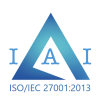These days, efficient and reliable IT infrastructure is critical to the success of any business. However, choosing the right approach to managing your IT needs can be challenging, with two main options available: managed IT services and in-house IT. We’ll explore the advantages and disadvantages of both approaches and provide insights into which option is best suited for your business.
Understanding Managed Services and In-House IT
Managed services involve outsourcing your organization’s IT management and support to a specialized third-party provider, like RTCS. The managed services provider (MSP) takes care of your IT needs, including network maintenance, cybersecurity, data backup and more, on an ongoing basis.
In contrast, in-house IT refers to hiring and maintaining a dedicated team of IT professionals within your organization. This team is responsible for managing all aspects of your IT infrastructure, including software updates, hardware maintenance and network security.
Pros of Outsourced Managed IT Services
Cost-effectiveness
Managed services can often be more cost-effective than maintaining an in-house IT team. With managed services, you typically pay a fixed monthly fee, making it easier to budget for your IT expenses. MSPs can often provide access to specialized expertise and advanced technology at a lower cost than hiring equivalent in-house staff.
Scalability
Managed services providers like RTCS can easily scale their offerings to meet the changing needs of your business. As your organization grows or your IT requirements change, your MSP can adjust its services accordingly, without the need for costly and time-consuming recruitment and training.
Expertise
MSPs like RTCS employ a team of IT experts who are well-versed in the latest technology trends, best practices and industry standards. By partnering with us, you gain access to a wealth of knowledge and experience, ensuring your IT infrastructure is always up-to-date and efficient.
Proactive support
Managed services providers often take a proactive approach to IT management, identifying and resolving potential issues before they become major problems. This helps minimize downtime and ensure your IT systems are always operating at peak performance.
Ready to take the burden of IT off your plate? Let’s start a conversation.
Pros and Cons of In-House IT
Pro: Control
With an in-house IT team, you have complete control over your organization’s IT infrastructure. This can be particularly advantageous for businesses with unique requirements or those that need to maintain strict security and compliance standards.
Pro: Customization
An in-house IT team can tailor your IT systems and processes to your specific business needs, potentially resulting in a more efficient and optimized infrastructure.
Con: Cost
Building and maintaining an in-house IT team can be expensive, particularly for small and medium-sized businesses. Costs can include salaries, benefits, training and recruitment, as well as the ongoing expenses associated with maintaining IT hardware and software.
Con: Limited expertise
It can be challenging for an in-house IT team to stay up to date with the latest technology trends and best practices, particularly if they are stretched thin managing day-to-day IT tasks. This may result in outdated or inefficient IT systems and processes.
Choosing the Right Option for Your Business
When deciding between outsourcing managed IT or keeping it in-house, businesses need to evaluate several strategic considerations to ensure they make the best decision for their organization. Here are some key factors to consider:
1. Cost: Assess the total cost of ownership (TCO) for both options, including factors such as hiring, training, salaries, benefits, equipment, software licenses and infrastructure maintenance. Compare these costs with the fees charged by MSPs, considering the potential for cost savings through economies of scale and access to specialized expertise.
2. Core competencies: Determine whether IT management is a core competency for your business. If IT is not essential to your competitive advantage, outsourcing may be a better option, allowing you to focus on your primary business functions and allocate resources more efficiently.
3. Expertise and resources: Evaluate the existing IT expertise within your organization and the resources required to maintain an in-house IT team. Consider whether your business can attract and retain the necessary talent to keep your IT infrastructure up-to-date and secure.
4. Scalability: Consider your organization’s growth plans and the scalability of your IT infrastructure. Outsourcing to an MSP may provide a more flexible and scalable solution, as they can adjust their services to meet your changing needs without requiring additional recruitment and training.
5. Security and compliance: Assess the security and compliance requirements of your organization and determine whether an MSP or in-house IT team is better equipped to manage them. MSPs often have extensive experience in handling complex security and compliance issues, which may be beneficial for businesses operating in highly regulated industries.
6. Service level agreements (SLAs): Examine the service level agreements offered by MSPs and compare them to the performance metrics of an in-house IT team. Consider factors such as response times, uptime guarantees and the scope of support services provided.
7. Vendor relationships: Assess the strength of your existing vendor relationships and whether an MSP can help manage and negotiate these relationships more effectively. MSPs often have established partnerships with leading technology vendors, which can lead to better pricing and support for your business.
8. Business continuity and disaster recovery: Evaluate the ability of your in-house IT team and potential MSPs to ensure business continuity and implement robust disaster recovery plans. An MSP with experience in this area may be better equipped to minimize downtime and protect your organization’s critical data and systems.
9. Cultural fit: Consider the cultural fit between your organization and the MSP. It’s essential to partner with a provider that shares your values, understands your business needs and can communicate effectively with your team.
Choose RTCS to be Your Partner in All Things Managed IT
By evaluating these strategic considerations, you can make an informed decision about whether to outsource your IT or keep it in-house, ultimately choosing the option that best aligns with your organization’s goals and requirements.
 We're Hiring
We're Hiring


